As leaders, we face the same challenge: finding enough hours in the day to do everything that needs to be done. Between leading teams, managing projects, and keeping our businesses on track, it’s easy to feel like time slips through our fingers.
I’ve learned, through trial and error, that the key to overcoming this struggle isn’t just about being busy—it’s about being intentional with how we manage time.
In this post, I’m sharing productivity techniques that have been proven to work for leaders across industries. These are strategies that have helped me stay focused and organized, and I’m confident they can help you do the same.
Productivity is not about eureka moments, your big break, pulling off all-nighters, and drinking Red Bull all day. If you want to achieve things in life, it’s about aiming for daily progress. – Darius Foroux
Top Productivity Methods for Business Leaders & Managers – and How to Apply Them
In today’s fast-paced world, it is really difficult to focus because of constant distractions. Being productive has become more challenging than ever. AI tools in consultancy, efficient recruitment tools, professional services, or knowledge work in general offer solace. But ultimately, knowing the most effective productivity tips is what gets you to meet deadlines, increase overall efficiency and drive better business results.
Time Blocking Technique
Time blocking is a widely-known time management technique used by leaders. It breaks your long work sessions into several blocks. These different blocks can be assigned with distinct jobs. This approach helps you structure your day, prioritize important activities, and ensure that critical tasks are completed, ultimately boosting both productivity and efficiency.
How to Apply It
- Identify the important tasks.
- Block specific time for particular tasks.
- Prioritize the tasks which are urgent and highly impactful.
- Be unavailable when you are on a particular time block.
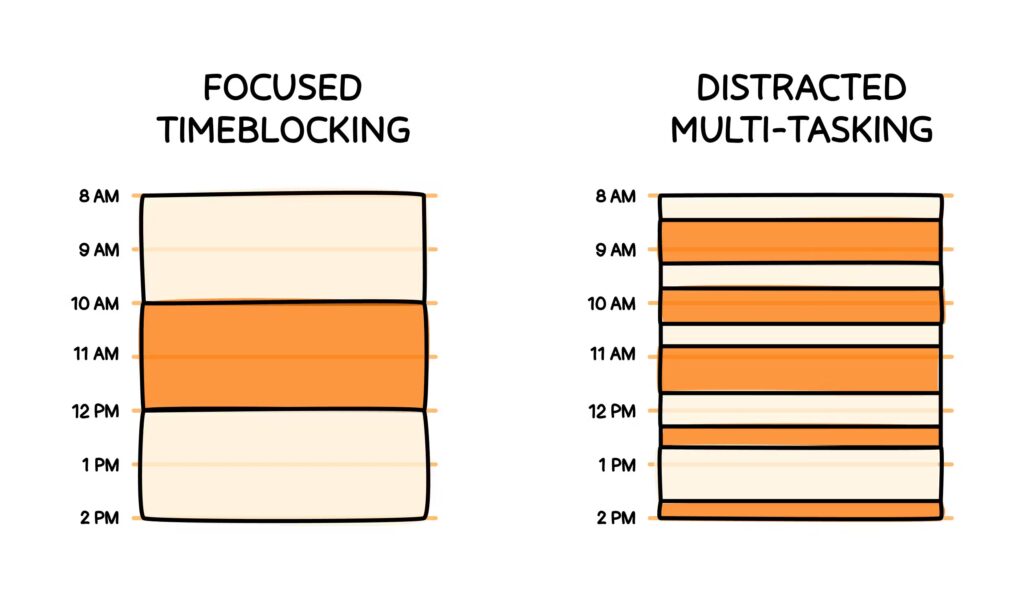
The Eisenhower Matrix
This specific method will help you prioritize tasks based on urgency and importance. Through this matrix, you can segregate your tasks into four categories and choose from them based on priority and urgency. Through this technique, you can focus on important tasks, organize them, and reduce stress by eliminating unnecessary distractions.
How to Apply It
- Divide your tasks into four quadrants i.e. urgent and important, not urgent but important, urgent but not important, and lastly not urgent not important.
- Review regularly.
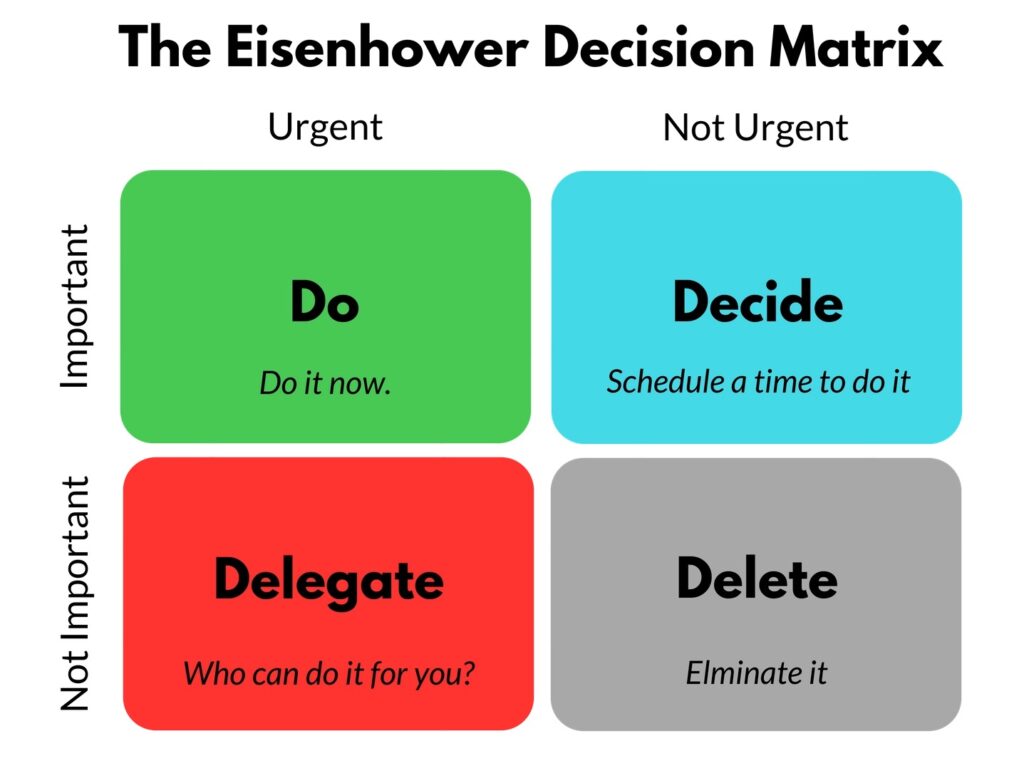
Pomodoro Technique
The Pomodoro method emphasizes the idea that frequent breaks can help an individual focus more on the given tasks at hand. It involves working in 25-minute intervals, called pomodoros and take short breaks in between. This technique not only helps you manage your time, it also helps you set goals and achieve them.
How to Apply It
- Select your task.
- Set a 25-minute timer.
- Take a 5-minute break.
- Repeat the process.
- Track your Pomodoros.
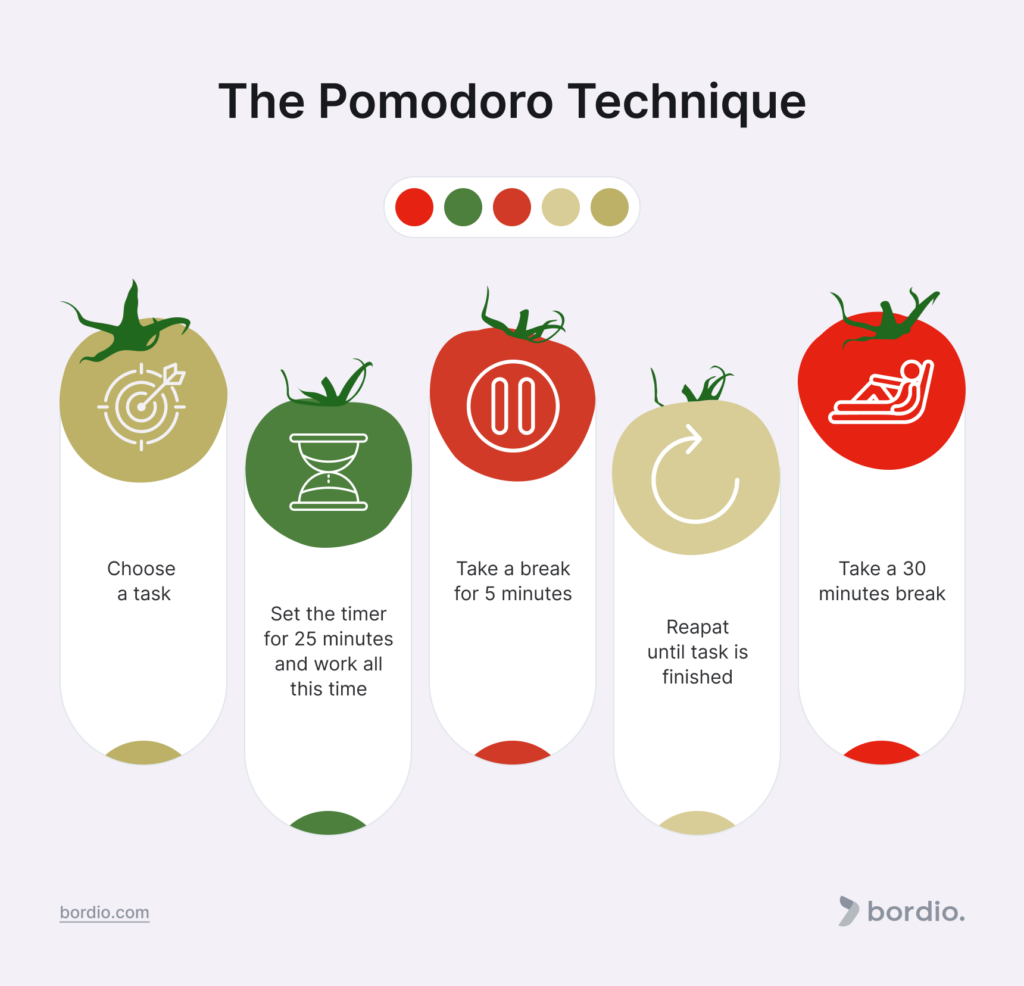
10-Minute Discussion
A 10-minute meeting is a productivity method which states that meetings must be kept to a strict 10-minute duration. It forces focused discussion, decision-making, and minimizes unnecessary details allowing individuals to get back to work quickly.
How to Apply It
- Set a clear agenda in advance.
- Start the meeting on time.
- Stick to the 10-minute limit.
- Encourage brief and direct communication.
- Follow up with a summary or email.
Delegation Strategy
Leaders often prefer to complete work by themselves but they need to learn the art of delegation to focus on more important tasks, improve efficiency and reduce burnout. Recognizing which tasks can be delegated allows you to free up your time, ensuring you’re not handling work that your team can easily manage.
Using employee engagement survey tools can also help leaders identify team strengths and areas where support is needed, making delegation even more effective.
How to Apply It
- Delegate non-essential tasks.
- Match tasks to team strengths.
- Provide clear instructions.
- Set check-ins for progress.
- Review and refine delegation.
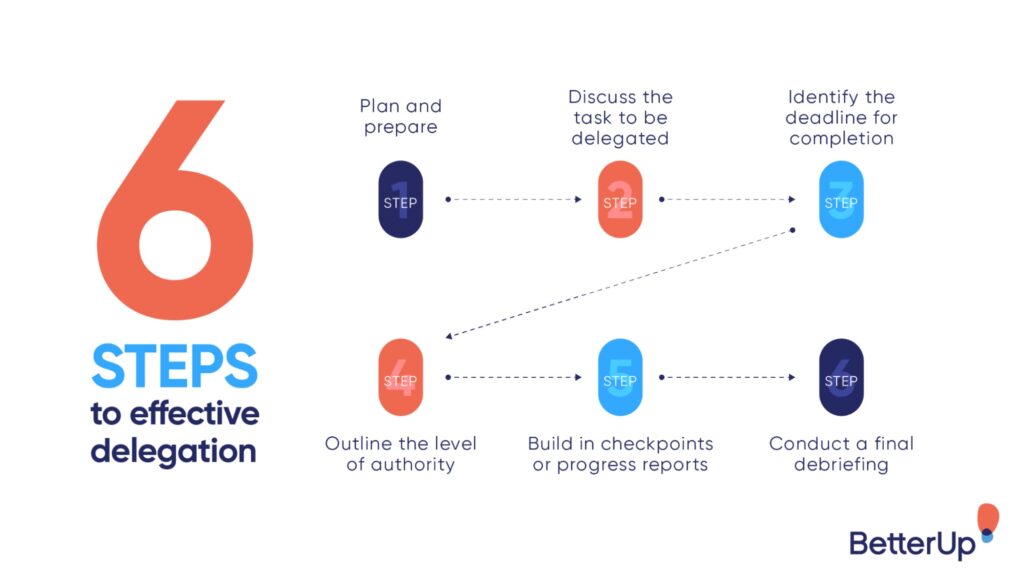
Eat the Frog Prioritization
This is a technique which encourages you to pick the toughest task first. So the frog represents the difficult task and the eat symbolises its completion. This productivity tip will help you complete high-priority tasks without any delay. A sense of contentment will prevail and you will be inspired to complete more tasks.
How to Apply It
- Identify the toughest task.
- Tackle it first thing in the morning.
- Break it down into smaller steps.
- Commit to completing it.
- Reward yourself after finishing.
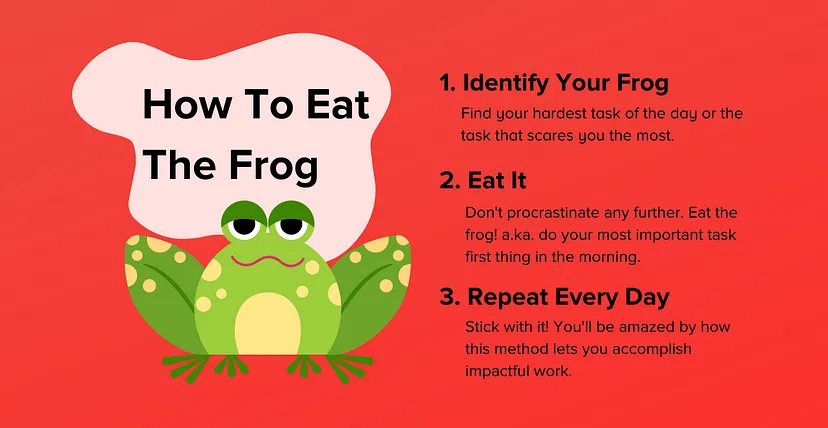
Day Theming Strategy
Day theming is a time management tip for leaders, where they can dedicate specific days of the week to particular types of tasks. This technique helps to group similar work to minimize context switching and enhance focus throughout the day for deeper concentration on one category of work at a time.
How to Apply It
- Assign themes to each day.
- Block time for themed tasks.
- Align themes with goals.
- Communicate your schedule to the team.
- Avoid task-switching.
- Review and adjust weekly.
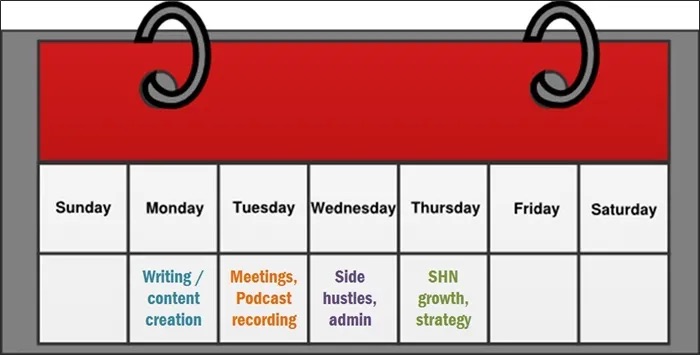
Final Thoughts
To conclude, making the best use of productivity techniques is essential for business leaders and managers. By adopting these methods of productivity, you can set your organization on a path to long-term success. Effective time management, combined with a focus on high-priority tasks, helps minimize distractions. It also enables you to fight challenges more efficiently. By using these productivity tips, you can concentrate on what truly matters, driving sustainable growth and promoting innovation in your organization.
Sandeep Kashyap is a guest contributor to the Leadership Circle blog.
Author Bio: Sandeep Kashyap is the CEO of ProofHub, Sandeep is transforming project management and team collaboration with his innovative solutions. With an unwavering passion for leading his team to success, Sandeep’s mantra is simple – “Keep growing, don’t stop.” When he’s not busy at work, Sandeep loves to explore new destinations and challenge himself with trekking adventures.






I love how you emphasize intentionality over sheer busyness. So many leaders fall into the trap of working harder instead of smarter. Small, consistent progress really is the key to sustainable productivity!
Your blog is a treasure trove of valuable insights and thought-provoking commentary. Your dedication to your craft is evident in every word you write. Keep up the fantastic work!
Your blog is a shining example of excellence in content creation. I’m continually impressed by the depth of your knowledge and the clarity of your writing. Thank you for all that you do.
Your blog is a true hidden gem on the internet. Your thoughtful analysis and in-depth commentary set you apart from the crowd. Keep up the excellent work!